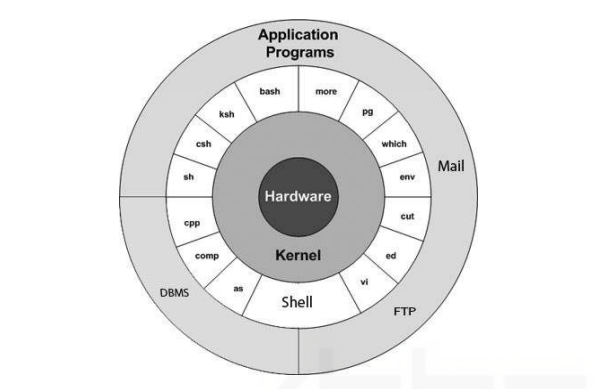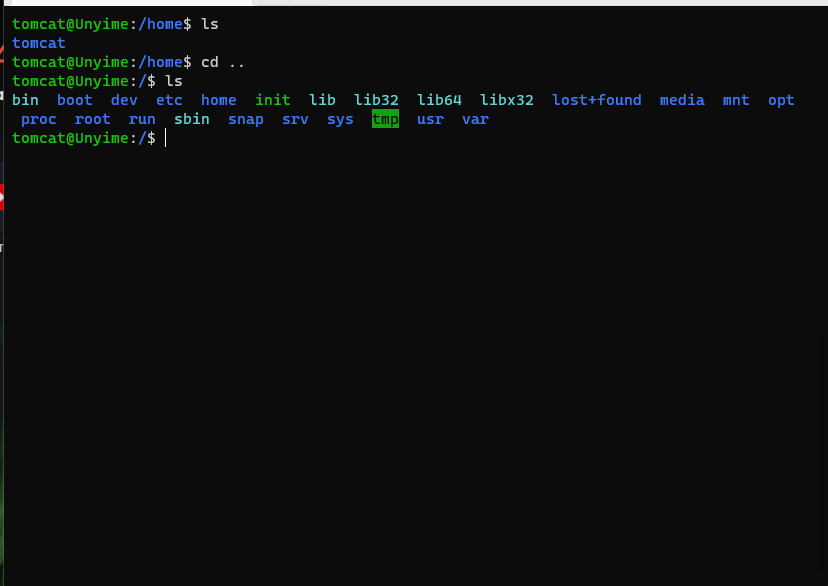Software engineer in the making week 2.0.. Understanding Linux..
 Big Dev Uy
Big Dev Uy
In one of my Earlier Blog Here i talked about core computer components in whish i talked about Operating systems, today in this blog post we'll learn more about Operating system, a recap of what it means and we'll look at one Operating system Linux.
So what is an Operating System ?
An operating system (OS) is a software program that acts as a bridge between computer hardware and user applications. It provides essential services and manages the resources of a computer system, enabling users to interact with the machine and run programs efficiently.
In this Blog i will refer to Operating system as OS
Operating system performs several key functions which include
Process Management: It oversees the execution of programs or processes, allocating system resources such as CPU time, memory, and input/output devices.
Memory Management: The OS handles the allocation and deallocation of memory to different programs and processes. It keeps track of the available memory, assigns memory portions to running processes, and ensures efficient memory usage.
File System Management: The OS provides a hierarchical structure for organizing and storing data on storage devices, manages files and directories, handles file access permissions.
Device Management: The OS interacts with various hardware devices, such as keyboards, mice, printers, and network adapters, allowing programs to communicate with these devices effectively.
User Interface: The OS provides a user-friendly interface to interact with the computer system. It can be a command-line interface (CLI) or a graphical user interface (GUI), allowing users to execute commands, launch applications, and perform tasks.
Security and Protection: The OS implements security measures to protect the system and user data. It manages user authentication, access controls, and enforces permissions to ensure that only authorized users can access specific resources and perform certain actions.
Some common OS include macOS , FreeBSD , FreeBSD , Solaris , AIX, Andriod and your popular Windows etc.
Lets Look at what a Kernel is. First of all have you ever plunged in a camera or Mic into your laptop, have you though of how your pc hardware identifies that is a mic and then transmits what ever sound you make through to the other end?
Tats teaser
A kernel is the core component of an operating system that directly interacts with the underlying hardware. It serves as the bridge between user applications and the hardware resources, facilitating their communication and coordination.
The kernel interacts with device drivers to enable communication with hardware devices such as disk drives, network interfaces, and input/output devices.
Before we look into Linux let's look into OS History. Without UNIX the History of OS and Linux will be incomplete..
What is UNIX: The history of UNIX dates back to the late 1960s when it was developed at Bell Labs, the research team of AT&T (American Telephone & Telegraph Company), originally written in assembly language , but in 1973, Version 4 Unix was rewritten in C.
A Proper Breakdown..

A Brief History of Linux:
The Linux operating system traces its origins back to 1991 when Linus Torvalds, a Finnish computer science student, released the initial version of the Linux kernel. Built as a Unix-like system, Linux drew inspiration from the Unix philosophy of simplicity and modularity. Over time, it has evolved into a robust and feature-rich operating system, driven by the contributions of a vibrant community of developers.
Linux Architecture:
The architecture of a Linux operating system consists of several key components, including the kernel, shell, libraries, and applications. The Linux kernel forms the core of the operating system, responsible for managing system resources, providing hardware abstraction, and handling process management. The shell serves as the interface between the user and the kernel, allowing users to interact with the system through commands and scripts.
Key Features of Linux:
Linux operating systems boast an array of compelling features that have contributed to their widespread adoption. These features include:
a. Open Source Nature: Linux is open source, meaning its source code is freely available for modification and distribution.
b. Stability and Reliability: Linux is known for its stability and robustness. Its design principles, such as modularity and process isolation, contribute to its ability to handle heavy workloads and ensure system uptime.
c. Security: Linux offers a strong security model, with built-in features such as access controls, user management, and secure communication protocols. My Teacher will say Its easy to install a virus on Windows than Linux
Linux comes with variants called Distributions or Flavors :
Linux distributions, or distros, are variations of the Linux operating system that package the Linux kernel along with a selection of software and tools. Each distribution caters to specific needs, targeting different user groups, such as desktop users, developers, or enterprise environments.
Some Popular Linux distributions include Ubuntu, Debian, Fedora, CentOS, and Arch Linux, each with its own unique characteristics and package management systems.
So as a software engineer in the making its important to Learn Linux..
here is a simple Linux Shell

In the Comings Blog ill write on some basic Linux Tips , Run Levels and File , Link Types and Systems Types In Linux.
Subscribe to my newsletter
Read articles from Big Dev Uy directly inside your inbox. Subscribe to the newsletter, and don't miss out.
Written by
